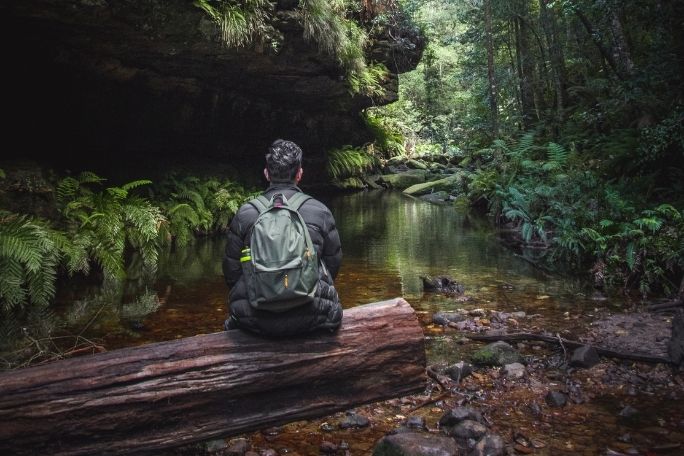Lesson summary
Students explore the future they would like to create by examining how they experience the present and how climate change might affect the future. They begin by spending time outside experiencing nature and imagining how this nature will be changed in the future. They then look at the Choose Your Climate Future website and analyse how climate change might affect various aspects of Australian life in the future. Finally, students are asked to imagine the future they would like to see through a visual storytelling activity.
Essential questions:
- How are we affected by our environment?
- How do we experience nature?
- How do we affect our environment?
- What is climate change and how will it affect our future?
- How can we affect our future?
Lesson guides and printables
Curriculum links
Select your curriculum from the options below.
Lesson details
Curriculum Mapping
Australian Curriculum content descriptions:
Year 5 English:
- Create literary texts using realistic and fantasy settings and characters that draw on the worlds represented in texts students have experienced (ACELT1612)
- Create literary texts that experiment with structures, ideas and stylistic features of selected authors (ACELT1798)
Year 5 HASS – Geography:
- The influence of people, including Aboriginal and Torres Strait Islander Peoples, on the environmental characteristics of Australian places (ACHASSK112)
Year 6 English:
- Create literary texts that adapt or combine aspects of texts students have experienced in innovative ways (ACELT1618)
- Experiment with text structures and language features and their effects in creating literary texts, for example, using imagery, sentence variation, metaphor and word choice (ACELT1800)
Year 6 Science:
- Sudden geological changes and extreme weather events can affect Earth’s surface (ACSSU096)
- Science involves testing predictions by gathering data and using evidence to develop explanations of events and phenomena and reflects historical and cultural contributions (ACSHE098)
Year 5 & 6 PDHPE:
- Explore how participation in outdoor activities supports personal and community health and wellbeing and creates connections to natural and built environments (ACPPS059)
General capabilities: Critical and creative thinking, Literacy, Personal and social capability.
Cross-curriculum priority: Sustainability OI.7., OI.9.
Syllabus Outcomes: EN3-7C, EN3-2A, ST3-9ES, ST3-4WS, ALS3.6.
Unit of work: Earth Hour.
Time required: 60 mins x 2
Level of teacher scaffolding: Medium – Lead students in outdoor activity, initiate class discussion, oversee activities.
Resources required
- Student Worksheet – one copy per student OR computers/tablets to access the online worksheet
- Device capable of presenting a website to the class. Internet access and computers/tablets for students
- Consequence wheel, Ranking ladder, Visual storytelling tips, Animation tips, Comic strip tips, Making a short film. Extension: About cool burning.
Skills
This lesson is designed to build students’ competencies in the following skills:
- Critical thinking
- Communication
- Creativity
- Social skills
- Digital literacy
Additional info
This lesson has been created in partnership with WWF-Australia. Earth Hour is the world’s largest community-driven climate change campaign. At the centre of Earth Hour is switching off lights to show a commitment to taking action.
Thousands of teachers use Earth Hour’s education program to enrich their curriculum and provide pathways for young people to create change in their world.
For the most up to date Earth Hour dates, times, and events, check here.


Welcome back!
Don't have an account yet?
Log in with:
Create your free Cool.org account.
Many of our resources are free, with an option to upgrade to Cool+ for premium content.
Already have an account?
Sign up with:
By signing up you accept Cool.org's Terms and Conditions(Opens in new tab) and Privacy Policy(Opens in new tab).